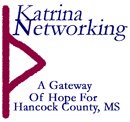Oil Spill Workers Information
OIL SPILL RESPONSE RESOURCES
Overview
Oil spill response workers may be exposed to many different chemical, physical, biological, and psychological hazards. These hazards vary depending on the type and location of the oil spill, type and stage of response, degree of coordination between entities involved in response and recovery, and the workers’ specific tasks. Therefore, occupational and environmental hazards need to be identified, assessed, and monitored in each oil spill response.
Potential Hazards
Chemical exposures may include benzene and other volatile organic compounds, oil mist, polycyclic aromatic hydrocarbons, and diesel fumes. Physical hazards may include ergonomic hazards, excessive noise levels, sun exposure and heat stress. Injuries may occur due to slips, trips, and falls on slippery or uneven walking and working surfaces. Other safety hazards are associated with the use of tools, equipment, machinery, and vehicles. Biological hazards include possible exposure to biting or venomous insects or other animals. Psychological hazards may include witnessing traumatic injuries or death, inability to help affected wildlife, and fatigue. Fatigue may result from working in a fast-paced environment, working extended shifts, and doing heavy labor or demanding cognitive tasks such as problem-solving and decision-making.
Training and Protecting Responders
Employers should train oil spill response workers about their potential hazards and safe work practices to prevent and control these hazards. All workers should be provided with the appropriate tools, equipment, personal protective equipment (PPE) and protective clothing needed to perform their job tasks. Workers should be trained in the appropriate care and use of this equipment. PPE should be selected based on identification of the hazards, protective qualities (such as oil resistance) and suitability for the tasks performed. An occupational health and injury surveillance system should be put in place as soon as possible. The prompt reporting of injuries and illnesses should be emphasized.
How is NIOSH Responding in the Gulf of Mexico?
NIOSH is protecting workers and volunteers responding to the oil spill in the Gulf of Mexico with the following efforts:
•Providing information to British Petroleum (BP), the Occupational Safety and Health Administration (OSHA), the U.S. Coast Guard, and other federal and state partners about protecting workers and volunteers from potential safety and health hazards.
•Assisting OSHA and the National Institute of Environmental Health Sciences (NIEHS) with information about tools for training workers including health hazard risk assessment and personal protective equipment selection
•Conducting a voluntary survey of workers to obtain a record of those who have participated and a mechanism to contact them about possible spill-related symptoms of illness or injury, as needed.

